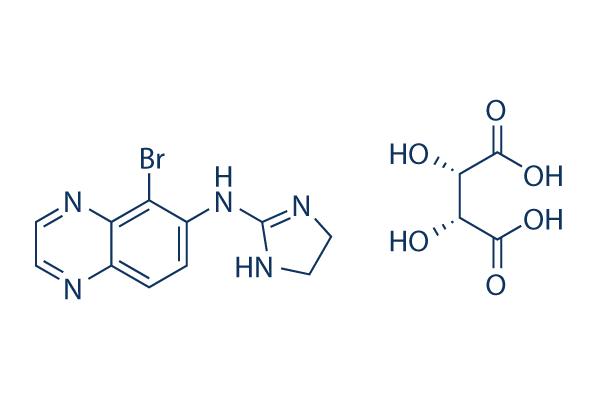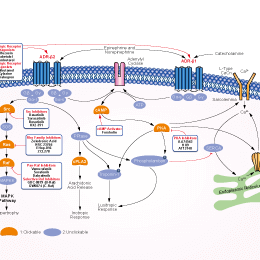
- Bioactive Compounds
- By Signaling Pathways
- PI3K/Akt/mTOR
- Epigenetics
- Methylation
- Immunology & Inflammation
- Protein Tyrosine Kinase
- Angiogenesis
- Apoptosis
- Autophagy
- ER stress & UPR
- JAK/STAT
- MAPK
- Cytoskeletal Signaling
- Cell Cycle
- TGF-beta/Smad
- DNA Damage/DNA Repair
- Compound Libraries
- Popular Compound Libraries
- Customize Library
- Clinical and FDA-approved Related
- Bioactive Compound Libraries
- Inhibitor Related
- Natural Product Related
- Metabolism Related
- Cell Death Related
- By Signaling Pathway
- By Disease
- Anti-infection and Antiviral Related
- Neuronal and Immunology Related
- Fragment and Covalent Related
- FDA-approved Drug Library
- FDA-approved & Passed Phase I Drug Library
- Preclinical/Clinical Compound Library
- Bioactive Compound Library-I
- Bioactive Compound Library-Ⅱ
- Kinase Inhibitor Library
- Express-Pick Library
- Natural Product Library
- Human Endogenous Metabolite Compound Library
- Alkaloid Compound LibraryNew
- Angiogenesis Related compound Library
- Anti-Aging Compound Library
- Anti-alzheimer Disease Compound Library
- Antibiotics compound Library
- Anti-cancer Compound Library
- Anti-cancer Compound Library-Ⅱ
- Anti-cancer Metabolism Compound Library
- Anti-Cardiovascular Disease Compound Library
- Anti-diabetic Compound Library
- Anti-infection Compound Library
- Antioxidant Compound Library
- Anti-parasitic Compound Library
- Antiviral Compound Library
- Apoptosis Compound Library
- Autophagy Compound Library
- Calcium Channel Blocker LibraryNew
- Cambridge Cancer Compound Library
- Carbohydrate Metabolism Compound LibraryNew
- Cell Cycle compound library
- CNS-Penetrant Compound Library
- Covalent Inhibitor Library
- Cytokine Inhibitor LibraryNew
- Cytoskeletal Signaling Pathway Compound Library
- DNA Damage/DNA Repair compound Library
- Drug-like Compound Library
- Endoplasmic Reticulum Stress Compound Library
- Epigenetics Compound Library
- Exosome Secretion Related Compound LibraryNew
- FDA-approved Anticancer Drug LibraryNew
- Ferroptosis Compound Library
- Flavonoid Compound Library
- Fragment Library
- Glutamine Metabolism Compound Library
- Glycolysis Compound Library
- GPCR Compound Library
- Gut Microbial Metabolite Library
- HIF-1 Signaling Pathway Compound Library
- Highly Selective Inhibitor Library
- Histone modification compound library
- HTS Library for Drug Discovery
- Human Hormone Related Compound LibraryNew
- Human Transcription Factor Compound LibraryNew
- Immunology/Inflammation Compound Library
- Inhibitor Library
- Ion Channel Ligand Library
- JAK/STAT compound library
- Lipid Metabolism Compound LibraryNew
- Macrocyclic Compound Library
- MAPK Inhibitor Library
- Medicine Food Homology Compound Library
- Metabolism Compound Library
- Methylation Compound Library
- Mouse Metabolite Compound LibraryNew
- Natural Organic Compound Library
- Neuronal Signaling Compound Library
- NF-κB Signaling Compound Library
- Nucleoside Analogue Library
- Obesity Compound Library
- Oxidative Stress Compound LibraryNew
- Plant Extract Library
- Phenotypic Screening Library
- PI3K/Akt Inhibitor Library
- Protease Inhibitor Library
- Protein-protein Interaction Inhibitor Library
- Pyroptosis Compound Library
- Small Molecule Immuno-Oncology Compound Library
- Mitochondria-Targeted Compound LibraryNew
- Stem Cell Differentiation Compound LibraryNew
- Stem Cell Signaling Compound Library
- Natural Phenol Compound LibraryNew
- Natural Terpenoid Compound LibraryNew
- TGF-beta/Smad compound library
- Traditional Chinese Medicine Library
- Tyrosine Kinase Inhibitor Library
- Ubiquitination Compound Library
-
Cherry Picking
You can personalize your library with chemicals from within Selleck's inventory. Build the right library for your research endeavors by choosing from compounds in all of our available libraries.
Please contact us at info@selleckchem.com to customize your library.
You could select:
- Antibodies
- Bioreagents
- qPCR
- 2x SYBR Green qPCR Master Mix
- 2x SYBR Green qPCR Master Mix(Low ROX)
- 2x SYBR Green qPCR Master Mix(High ROX)
- Protein Assay
- Protein A/G Magnetic Beads for IP
- Anti-Flag magnetic beads
- Anti-Flag Affinity Gel
- Anti-Myc magnetic beads
- Anti-HA magnetic beads
- Magnetic Separator
- Poly DYKDDDDK Tag Peptide lyophilized powder
- Protease Inhibitor Cocktail
- Protease Inhibitor Cocktail (EDTA-Free, 100X in DMSO)
- Phosphatase Inhibitor Cocktail (2 Tubes, 100X)
- Cell Biology
- Cell Counting Kit-8 (CCK-8)
- Animal Experiment
- Mouse Direct PCR Kit (For Genotyping)
- New Products
- Contact Us
Brimonidine Tartrate
Synonyms: UK 1434 Tartrate
Brimonidine Tartrate(UK 1434 Tartrate) is a highly selective α-adrenergic receptor agonist with EC50 of 0.45 nM for the α2A adrenoreceptor, and used to treat open-angle glaucoma or ocular hypertension.

Brimonidine Tartrate Chemical Structure
CAS No. 70359-46-5
Purity & Quality Control
Batch:
Purity:
99.92%
99.92
Brimonidine Tartrate Related Products
| Related Targets | α-adrenergic receptor β-adrenergic receptor Beta-Adrenergic Receptor | Click to Expand |
|---|---|---|
| Related Products | Zenidolol (ICI-118551) Hydrochloride Yohimbine HCl L755507 Atipamezole Higenamine hydrochloride Fenoterol hydrobromide Medetomidine HCl Rauwolscine hydrochloride Deoxycorticosterone acetate Detomidine HCl Naftopidil | Click to Expand |
| Related Compound Libraries | FDA-approved Drug Library Natural Product Library Bioactive Compound Library-I GPCR Compound Library | Click to Expand |
Signaling Pathway
Biological Activity
| Description | Brimonidine Tartrate(UK 1434 Tartrate) is a highly selective α-adrenergic receptor agonist with EC50 of 0.45 nM for the α2A adrenoreceptor, and used to treat open-angle glaucoma or ocular hypertension. | ||
|---|---|---|---|
| Targets |
|
| In vitro | ||||
| In vitro | Brimonidine reduces the progressive loss of ganglion cells to 26% and 15% at doses of 0.5 mg/kg and 1 mg/kg, respectively. Brimonidine administration initiates 10 days after IOP elevation prevents any further loss of ganglion cells. Brimonidine attenuates the increase in immunoreactivity of GFAP in ocular hypertensive retinas. Brimonidine, but not timolol, shows significant protection of retinal ganglion cells when applied at the time of intraocular pressure (IOP) elevation and prevents further cell loss when applied after intraocular pressure (IOP) is elevated. [1] Brimonidine injected intravitreally into Sprague-Dawley rat eyes increases the number of BDNF-positive RGCs from 55% to 166%. [2] Brimonidine 0.5% given as one drop before, after, or both before and after 360 degrees argon laser trabeculoplasty significantly lowers the incidence of postlaser IOP spikes. Brimonidine 0.2% instilled twice daily offers long-term IOP control comparable with that achieved with timolol 0.5% and better than betatolol 0.25% suspension. [3] |
|||
|---|---|---|---|---|
| In Vivo | ||
| In vivo | Brimonidine (1 mg/kg) significantly protects RGCs from elevated IOP-induced cell death in adult rats. [4] Brimonidine (0.0001%) BMD results in the loss of approximately 37% of the retinal ganglion cell (RGC) population and has no significant neuroprotective effects in adult Sprague-Dawley rats. Brimonidine (0.001% or 0.01%) results in the survival of 76 or 90%, respectively, of the RGC population, and 0.1% Brimonidine fully prevents retinal ganglion cell (RGC) death in the first 7 days after ischemia in adult Sprague-Dawley rats. [5] |
|
|---|---|---|
Chemical Information & Solubility
| Molecular Weight | 442.22 | Formula | C15H16BrN5O6 |
| CAS No. | 70359-46-5 | SDF | Download Brimonidine Tartrate SDF |
| Smiles | C1CN=C(N1)NC2=C(C3=NC=CN=C3C=C2)Br.C(C(C(=O)O)O)(C(=O)O)O | ||
| Storage (From the date of receipt) | |||
|
In vitro |
DMSO : 88 mg/mL ( (198.99 mM) Moisture-absorbing DMSO reduces solubility. Please use fresh DMSO.) Water : 22 mg/mL Ethanol : Insoluble |
Molecular Weight Calculator |
|
In vivo Add solvents to the product individually and in order. |
In vivo Formulation Calculator |
||||
Preparing Stock Solutions
Molarity Calculator
In vivo Formulation Calculator (Clear solution)
Step 1: Enter information below (Recommended: An additional animal making an allowance for loss during the experiment)
mg/kg
g
μL
Step 2: Enter the in vivo formulation (This is only the calculator, not formulation. Please contact us first if there is no in vivo formulation at the solubility Section.)
% DMSO
%
% Tween 80
% ddH2O
%DMSO
%
Calculation results:
Working concentration: mg/ml;
Method for preparing DMSO master liquid: mg drug pre-dissolved in μL DMSO ( Master liquid concentration mg/mL, Please contact us first if the concentration exceeds the DMSO solubility of the batch of drug. )
Method for preparing in vivo formulation: Take μL DMSO master liquid, next addμL PEG300, mix and clarify, next addμL Tween 80, mix and clarify, next add μL ddH2O, mix and clarify.
Method for preparing in vivo formulation: Take μL DMSO master liquid, next add μL Corn oil, mix and clarify.
Note: 1. Please make sure the liquid is clear before adding the next solvent.
2. Be sure to add the solvent(s) in order. You must ensure that the solution obtained, in the previous addition, is a clear solution before proceeding to add the next solvent. Physical methods such
as vortex, ultrasound or hot water bath can be used to aid dissolving.
Tech Support
Answers to questions you may have can be found in the inhibitor handling instructions. Topics include how to prepare stock solutions, how to store inhibitors, and issues that need special attention for cell-based assays and animal experiments.
Tel: +1-832-582-8158 Ext:3
If you have any other enquiries, please leave a message.
* Indicates a Required Field
Tags: buy Brimonidine Tartrate | Brimonidine Tartrate ic50 | Brimonidine Tartrate price | Brimonidine Tartrate cost | Brimonidine Tartrate solubility dmso | Brimonidine Tartrate purchase | Brimonidine Tartrate manufacturer | Brimonidine Tartrate research buy | Brimonidine Tartrate order | Brimonidine Tartrate mouse | Brimonidine Tartrate chemical structure | Brimonidine Tartrate mw | Brimonidine Tartrate molecular weight | Brimonidine Tartrate datasheet | Brimonidine Tartrate supplier | Brimonidine Tartrate in vitro | Brimonidine Tartrate cell line | Brimonidine Tartrate concentration | Brimonidine Tartrate nmr







































